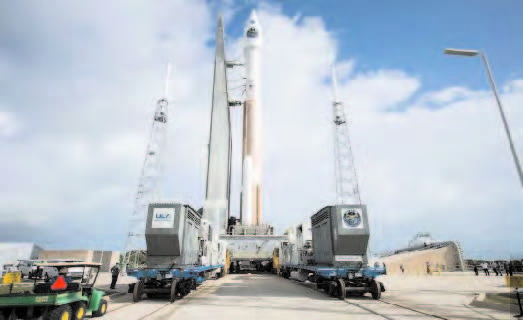CAPE CANAVERAL (TIP): NASA launched four identical spacecraft Thursday on a billion-dollar mission to study the explosive give-and-take of the Earth and sun’s magnetic fields.
The unmanned Atlas rocket — and NASA’s NASA — soared into a clear late-night sky, right on time, to cheers and applause.
The quartet of observatories will be placed into an oblong orbit stretching tens of thousands of miles into the magnetosphere — nearly halfway to the moon at one point. They will fly in pyramid formation, between 6 miles and 250 miles apart, to provide 3-D views of magnetic reconnection on the smallest of scales.
Magnetic reconnection is what happens when magnetic fields like those around Earth and the sun come together, break apart, then come together again, releasing vast energy. This repeated process drives the aurora, as well as solar storms that can disrupt communications and power on Earth. Data from this two-year mission should help scientists better understand so-called space weather.
Each observatory resembles a giant octagonal wheel, stretching more than 11 feet across and 4 feet high, and weighing 3,000 pounds apiece. They’re numbered and stacked like tires on top of the rocket, with No. 4 popping free first more than an hour after liftoff, followed every five minutes by another.
Once the long, sensor-laden booms are extended in a few days, each spacecraft could span a baseball field.
Principal investigator Jim Burch from the Southwest Research Institute in San Antonio said measurements will be made down to the electron scale, significantly smaller than previous heliophysics missions. In all, there are 100 science sensors. Primary science-gathering will begin this summer, following a five-month checkout.
The findings from the $1.1 billion mission will be useful in understanding magnetic reconnection throughout the universe. Closer to home, space weather scientists along with everyone on Earth hopefully will benefit.
“We’re not setting out here to solve space weather,” Burch said. “We’re setting out to learn the fundamental features of magnetic reconnection because that’s what drives space weather.”
